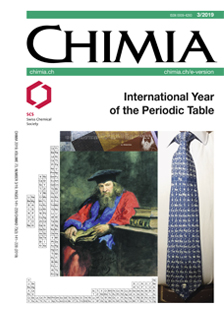Set Aside when Building the Periodic Table 150 Years ago, are Rare Earths any better considered by Chemists in the 21st Century?
DOI:
https://doi.org/10.2533/chimia.2019.165PMID:
30890211Keywords:
4f-subshell, Luminescence, Magnetism, Rare earthsAbstract
A hundred and fifty years ago, the Rare Earths posed a serious problem to Mendeleyev because of their very similar chemical properties, although their atomic mass dispersions pointed to different elements. This difficulty persisted for several decades and only the emergence of the atomic theory provided some legiti- macy for their consideration as a full series of 15 elements resulting from the filling of the 4f orbitals (La-4f0 to Lu-4f14 ), to which scandium and yttrium were added for the sake of chemical similarities. However, it is difficult to give up bad habits and major advances in transition metal chemistry started systematically with d-block cations prior to extension to f-block analogues, and this despite the broader perspectives often brought by the latter. The technology-oriented society put in place for economic reasons during the last five decades has reactivated scientific interest in the Rare Earths, which have now become essential for many applications in telecommunications, lasers, magnetic materials and optical devices.Downloads
Published
2019-03-27
Issue
Section
Scientific Articles
License
Copyright (c) 2019 Swiss Chemical Society

This work is licensed under a Creative Commons Attribution-NonCommercial 4.0 International License.
How to Cite
[1]
C. Piguet, Chimia 2019, 73, 165, DOI: 10.2533/chimia.2019.165.







